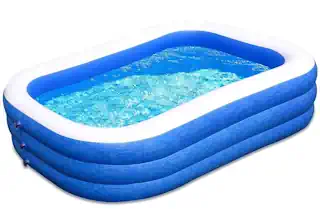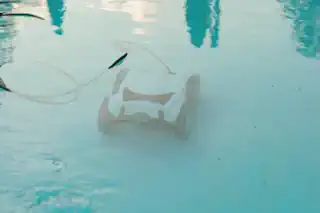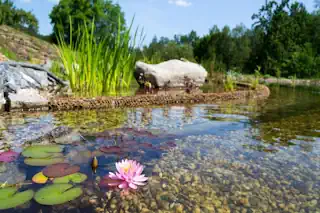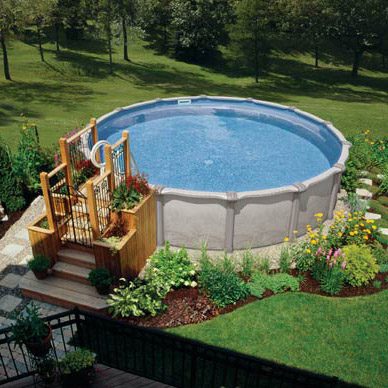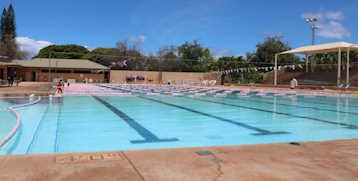A Beginners Guide for Swimming Pool Chemicals
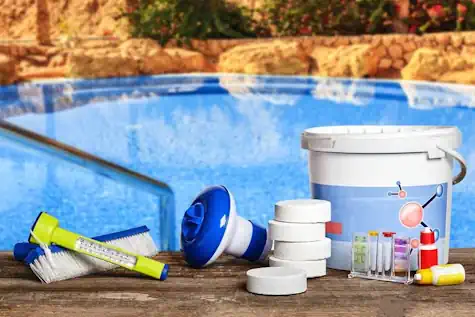
Introduction to the Importance of Pool Chemicals
Owning a swimming pool is more than just a luxury; it’s a commitment to maintaining a safe and enjoyable environment for everyone. One of the most crucial aspects of pool upkeep is managing the chemicals that keep your water clean and safe. Proper chemical maintenance not only ensures crystal-clear water but also protects swimmers from harmful bacteria and algae. In this post, we’ll dive deep into the world of swimming pool chemicals, offering valuable insights that every pool owner should know.
Types of Pool Chemicals: Chlorine, pH Balancers, Algaecides, and More
When it comes to pool and pool cleaning chemicals, there are a few key players you need to be familiar with:
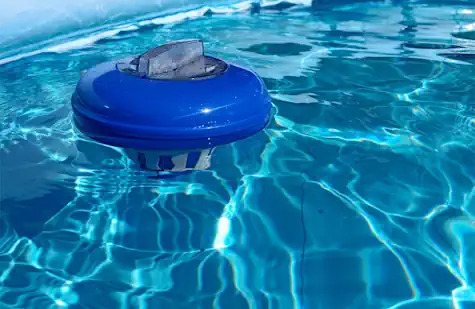
Chlorine: An essential sanitizer that kills bacteria and controls algae.
pH Balancers: Adjust the pH level to prevent eye and skin irritation and maintain chlorine efficiency.
pH Increasers: Raise the pH level when it is too low.
pH Reducers: Lower the pH level when it is too high.
Algaecides: Prevent and control algae growth for a clearer pool.
Shock Treatments: High-dose chlorine treatments to thoroughly sanitize the pool after heavy use or extreme conditions.
Stabilizers: Protect chlorine from degradation caused by sunlight, usually in the form of cyanuric acid.
Clarifiers: Help to clump tiny particles together so the filter can remove them, keeping the water crystal clear.
Test Kits & Strips: Used to regularly check the chemical levels in your pool, ensuring the water stays balanced and safe.
Calcium Hardness Increasers: Prevent corrosion and scaling by maintaining the correct calcium hardness level.
Phosphate Removers: Help to eliminate phosphates in your pool, which are a primary food source for algae. By removing phosphates, you can effectively starve the algae and prevent its growth, making your pool easier to maintain and keeping the water clear.
This list can serve as your go-to reference, helping you keep track of the various pool chemicals essential for a clean, safe, and enjoyable swimming pool.
Chlorine
Chlorine is the workhorse of pool sanitation. It’s a very effective way to kill bacteria and control algae, making it indispensable. Whether you use pool chlorine tablets or, liquid, or granular forms, ensuring the right amount of chlorine is vital for keeping your pool water safe.
pH Balancers
Maintaining the correct pH level in your pool is crucial. If the pH is too high or too low, it can cause irritation to the eyes and skin and can also reduce the effectiveness of chlorine. pH balancers help you keep the pH level in the optimal range of 7.2 to 7.6.
Algaecides
Algae can quickly turn your inviting pool into a green, murky mess which may create pool stains that are very hard to remove. Algaecides are specialized chemicals designed to prevent and control algae growth. While not always necessary if chlorine levels are maintained correctly, they provide an extra layer of protection. Algae control for outdoor pools is very important and not something to overlook.
Shock Treatments
Sometimes, regular chlorination isn’t enough, especially after heavy use or extreme weather conditions. Shock treatments involve adding a large dose of chlorine to quickly raise the level and sanitize the pool thoroughly.
Stabilizers
Stabilizers like cyanuric acid help protect chlorine from being broken down by the sun’s UV rays. This is particularly important for outdoor swimming pools that are exposed to sunlight for extended periods.
How to Test and Maintain Proper Levels of Pool Chemicals
Testing your pool water regularly is essential for maintaining the correct chemical balance. Here’s a straightforward guide to help you out:
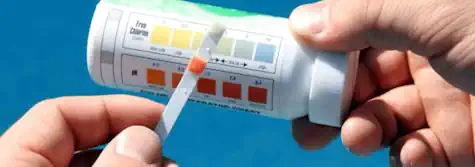
Step 1: Gather Your Tools
You’ll need a reliable testing kit or test strips, which are available at most pool supply stores.
Step 2: Test the Water
Collect a sample of pool water and use your testing kit to measure chlorine levels, pH, alkalinity, and other important metrics.
Ideal Chemical Ranges for Your Pool
To maintain a safe and enjoyable swimming pool type of environment, it’s important to keep your pool chemicals within the following ranges:
Free Chlorine: 1.0 to 3.0 ppm (parts per million)
pH Level: 7.2 to 7.6
Total Alkalinity: 80 to 120 ppm
Cyanuric Acid (Stabilizer): 30 to 50 ppm
Calcium Hardness: 200 to 400 ppm
Total Dissolved Solids (TDS): Less than 2500 ppm
Phosphates: Less than 100 ppb (parts per billion)
Step 3: Analyze Results
Compare your test results to the recommended levels. If any chemicals are out of range, adjust them accordingly using the appropriate pool chemicals.
Step 4: Regular Maintenance
Make testing a weekly habit. During peak swimming season, you might need to test more frequently to ensure everything stays in balance.
Common Mistakes in Pool Chemical Maintenance
Even seasoned pool owners can make mistakes. We had an above-ground pool that was perfectly balanced, with water that was crystal clear. Then the kids spent a day running across the grass and jumping into the pool. I failed to shock the pool after they were done and the next day it was an algae nightmare. It ruined the filter and we ended up having to replace the pool. A good ground pool accessory kit is a great filter aid for chemical maintenance. Here are some common pitfalls to avoid:
Over-Chlorination
Adding too much chlorine can lead to skin and eye irritation and will also damage pool equipment over time. Always follow the recommended dosage. A well-balanced pool will look clear and the pool chlorine odor will be present but not overly powerful.
Ignoring pH Levels
A balanced pH is crucial for effective chlorine performance. Neglecting pH levels can render your chlorine less effective, leading to cloudy water and potential health risks.
Inconsistent Testing
Infrequent testing can allow problems to go unnoticed until they become significant issues. Stick to a consistent testing schedule to keep everything in check. There are many water test kits so find the one that works best for you.
Not Checking Calcium Levels
Excessive calcium can lead to a build-up of scale on the pool surface and in the pool filtration system Scale removal is very difficult and expensive. What starts as a slimy feeling during a swim can turn crusty in a very short period of time.
Filter Cleaning
One of the easiest cleaning options is to regularly change and clean the pool filter. This is an easy thing to do and may be one of the best steps for algae control you can implement regardless of your pool type or chemical type.
Eco-Friendly Alternatives in Pool Chemicals
For those looking to reduce their environmental footprint, there are eco-friendly alternatives available:
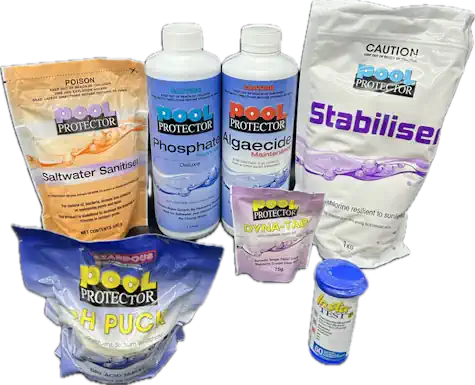
Saltwater Systems
Saltwater pools use salt to generate chlorine, reducing the need for traditional chlorine products. These systems are gentler on the skin and eyes and have a lower environmental impact. Many consider saltwater systems to be the perfect choice for the chemical type so you can have a swim where alkalinity, bacteria, and pH are all in check.
Chemicals Used for a Saltwater System
Switching to a saltwater system can simplify pool maintenance and provide a more enjoyable swimming experience. We decided to convert our spa water chemical type to a saltwater system. It was an easy conversion and we prefer how our skin feels after being in the hot tub. Changing the chemical type of your pool type to salt water may be a little more work but we recommend it. Here are the key chemicals pool supplies you’ll need for a saltwater pool:
Salt: The primary component in a saltwater pool, used to generate chlorine through electrolysis.
Cyanuric Acid (Stabilizer): Protects the chlorine generated from the salt against degradation by sunlight.
pH Balancers: Maintain the optimal pH level to prevent corrosion and scaling.
pH Increasers: Raise the pH level when needed.
pH Reducers: Lower the pH level if it becomes too high.
Calcium Hardness Increasers: Ensure the water has the right amount of calcium to protect the pool structure and equipment.
Algaecides: Help control and prevent algae growth, although typically needed less frequently in saltwater systems.
Shock Treatments: Occasionally required to give a quick boost of chlorine, especially after heavy pool use or significant weather changes.
Test Kits & Strips: Essential for regularly checking and maintaining the chemical balance of your pool.
This list can guide you in keeping your saltwater pool clean, balanced, and ready for swimming.
Mineral Systems
Mineral-based systems use natural minerals like silver and copper to sanitize and treat pool water with a more natural chemistry. These systems often require less chlorine and can provide a more natural swimming experience. Here are the essential chemicals you’ll need for maintaining a mineral pool:
Mineral Cartridges: Contain natural minerals such as silver and copper as the active ingredient to provide ongoing sanitation.
Chlorine: While needed at lower levels, it’s still required to supplement the sanitizing effects of the minerals.
pH Balancers: Maintain the optimal pH level for effective mineral sanitation.
pH Increasers: Raise the pH level when needed.
pH Reducers: Lower the pH level if it becomes too high.
Algaecides: Assist in controlling and preventing algae growth.
Shock Treatments: Occasionally boost chlorine levels, especially after heavy use or during extreme weather conditions.
Test Kits & Strips: Essential for regularly checking and maintaining the chemical balance of your pool.
Non-Chlorine Shock
Using non-chlorine shock treatments can reduce your reliance on chlorine while still effectively sanitizing your pool and also help to remove other contaminants.
Top 5 Non-Chlorine Shock Chemicals
If you’re considering making a switch to non-chlorine shock treatments, here are five top options to explore to keep your pool in great swim status:
Potassium Monopersulfate (MPS)
A powerful oxidizer that helps break down contaminants without adding chlorine to the pool.
Works quickly and allows for swimming shortly after application.
Sodium Bromide
Converts into bromine when activated, providing effective sanitization.
Less harsh on skin and eyes compared to traditional chlorine.
Hydrogen Peroxide
An excellent oxidizer that helps eliminate organic contaminants in the pool.
Leaves no residue and breaks down into water and oxygen.
Ozone Generators
Produces ozone, a potent sanitizer that helps reduce the need for chemicals.
Requires an initial investment but offers long-term benefits.
UV Light Systems
Utilizes ultraviolet light to neutralize bacteria and pathogens.
Reduces the need for additional chemical treatments and provides a more natural solution.
These non-chlorine shock options can help you maintain a clean, safe, and pleasant swimming and spa environment while reducing your reliance on traditional chlorine products.
Conclusion: The Importance of Proper Pool Chemical Maintenance for a Safe and Enjoyable Swimming Experience
Proper maintenance of pool chemicals is the backbone of a safe and enjoyable swimming environment. By understanding and managing the different types of pool chemicals, regularly testing your water, and avoiding common mistakes, you can ensure your pool remains a haven of relaxation and fun. Water chemistry can be challenging but it makes all the difference.
Frequently Asked Questions (FAQ)
What is the ideal pH level for my pool?
The ideal pH level for a pool should be between 7.2 and 7.8. This range ensures that the water is comfortable for swimmers and that chlorine works effectively.
How often should I test my pool water?
It’s recommended to test your pool water at least twice a week. Regular testing helps you maintain the right chemical balance and address any issues before they become major problems. Using a lot of test strips to ensure you have a clean pool costs a lot less money than cleaning a dirty pool.
Can I switch from a chlorine pool to a saltwater pool?
Yes, you can convert your chlorine pool to a saltwater or bromine pool. This process involves installing a saltwater chlorine generator and adding the appropriate amount of salt. Consult with a pool professional for specific guidance. This can be a little harder to do for an inground pool but most inground filtration systems can be converted.
Are saltwater pools easier to maintain than traditional chlorine pools?
Saltwater pools can be easier to maintain because they continuously generate chlorine, reducing the need for frequent chemical additions. However, they still require regular testing and balancing to ensure water quality. Make sure your testing kit type is for saltwater chemicals.
Are mineral systems a good alternative to chlorinated pools?
Mineral systems can be a great alternative as they use natural minerals for sanitation, often requiring less chlorine. This can result in a more pleasant swimming experience with fewer chemicals. Labeling for mineral-based chemical kits may still read minerals chlorine pack but these are not chlorine tablets. Once again, make sure you are using the right testing kit type.
What are the benefits of using non-chlorine pool shock treatments?
Non-chlorine shock treatments can effectively sanitize your pool without adding chlorine. They are often faster-acting, allowing for quicker swimming resumption, and can be gentler on the skin and eyes. Waiting for a chlorine pool maintenance shock to stabilize is no fun and can take days.
How often should I use shock treatments in my pool?
Shock treatments should be used periodically, such as after heavy pool use, significant weather changes, or when you notice a decline in water quality. The frequency will depend on your specific pool usage and conditions. Algae blooms are hard to see until they are suddenly everywhere. If there is any doubt we recommend you execute a shock treatment to kill algae blooms before you need algaecide.
What should I do if my pool develops algae?
If your pool develops algae, you should first test and balance the water chemistry. Then, use an algaecide or shock treatment to eliminate the algae, and regularly brush and vacuum the pool to remove any remaining residue. There are many forms of algae but green algae and red algae are the most common.
Standard algaecide will kill both but there will still be lots of cleanup afterward if the algae blooms are significant. If your pool should end up with a stain, check with the manufacturer or a local pool maintenance group to see if they have resources to help you remove the stain. A good phosphate remover will be helpful if you find algae control is a recurring issue.
Can I use eco-friendly alternatives if I have a small backyard pool?
Yes, eco-friendly alternatives like saltwater systems and mineral systems can be used for pools of any size, including small backyard pools or pop-up pools. These systems offer environmental benefits and can simplify maintenance.
How can I reduce my pool’s environmental footprint?
To reduce your pool’s environmental footprint, consider using eco-friendly chemical alternatives, conserving water, covering your pool when not in use, and using energy-efficient equipment for heating and filtration. Similarly, there are a variety of eco-friendly pool maintenance options to choose from.
